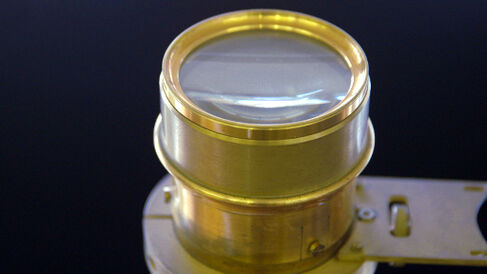Survey Instruments in India

Astronomical observations performed several key functions within colonial survey sciences. Portable instruments could be used to find local time, orient field stations to true north, and fix longitude and latitude by tracking celestial motions.
In India in particular, this highly accurate mapping work then anchored local revenue surveys that formed the basis for colonial tax regimes.
Contrary to prevalent narratives in the history of medicine, China and Chinese historical actors played key roles in this field throughout the twentieth century. Several episodes illustrate this argument: the Qing dynasty's organization of the International Plague Conference in 1911; the role of China in the work of the interwar League of Nations Health Organization and postwar establishment of the World Health Organization; Cold War medical diplomacy and Chinese models of primary health care during the 1970s. These case studies together show that Chinese physicians and administrators helped shape concepts and practices of "global health" since before that term rose to prominence in the 1990s, and current events are best understood in the context of this history. They also provide historical context for the already-fraught politics of current initiatives to produce a COVID-19 vaccine.
This is a talk by Mary Brazelton of the Department of History and Philosophy of Science and is part of the Cambridge Festival -- booking is essential. Please book on the Cambridge Festival website.
Potatoes and barley are staples of British dinnerplates. Originally from the Peruvian Andes, potatoes journeyed to Britain in the sixteenth century and became side and centrepiece in all manner of meals. Barley's British history stretches back thousands of years, with malt long central to beer production. Despite these long histories, both crops were transformed in the twentieth century to suit a changing environment. In this talk, we'll uncover the hidden histories of the Maris Piper potato and Maris Otter barley—both developed at Cambridge's former Plant Breeding Institute and introduced to the market in 1966—which have become two of the most popular varieties grown in Britain today.
A talk with Helen Curry and Jessica Lee of the Department of History and Philosophy of Science for the Cambridge Festival. Book on the Cambridge Festival website.
Humans and other animals are made out of millions of tiny cells. Find out more about them using objects from the Whipple Museum collections and then create or draw your own cell model to remind yourself of how everything works.
Booking is recommended: please see the Cambridge Festival website.
Explore the work of botanical artist Carolina Dodel-Port and create some botanical designs of your own.
To attend this event, please book our Monday 14:00 ticket for the below date from the University of Cambridge Museums website.
Astronomy on the move
Image 1 shows a ‘Russian’-style transit instrument that has been carefully packed into two large boxes for transportation into the field.
This instrument was one of a pair ordered in 1869 for use in the Great Trigonometrical Survey.
In 1862 the Surveyor General of India, Andrew Scott Waugh, had declared the results from the entire eastern section of the survey to be sub-standard “on account of the defective state of instrumental equipments”, and ordered it re-done “with appropriate apparatus.”
This instrument was used to determine local time from the motion of the stars. This could then be compared with Greenwich time transmitted via telegraph, the time difference giving the site’s longitude.
This instrument therefore worked within a complex imperial network of telegraph lines and survey outposts.
Its size and weight also reminds us that these networks could not function without the labour that made such tools “portable.”
Revenue surveying
At a local level, British tax collectors in India conducted surveys to settle land rights and assess revenues.
This called for simple survey instruments like the 66-ft chain shown in Image 2, used to measure boundary lengths; and the plane table shown in Image 3, used for basic sketching of field sites.
Much of the labour for these surveys was conducted by trained youths of mixed European-Indian parentage recruited from orphanages and paid one-sixth of a military surveyor’s allowance.
Joshua Nall, ‘Survey Instruments in India’, Explore Whipple Collections, Whipple Museum of the History of Science, University of Cambridge, 2020.
